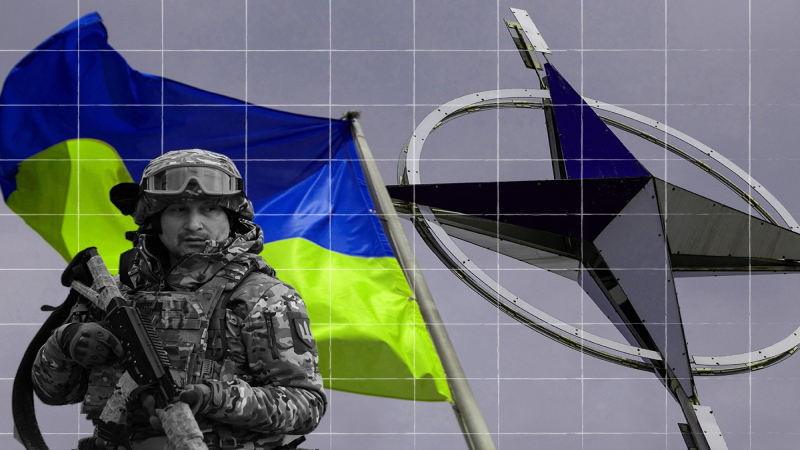Latest News
NATO Summit Highlights Europe’s Defense Digitization Strategy

The latest NATO summit in The Hague has marked a major turning point for Europe’s defense strategy, placing digital transformation at the center of its modernization efforts. Leaders from across the alliance gathered to discuss how technology, data, and innovation can enhance collective security in an increasingly complex and unpredictable global environment. As geopolitical tensions rise, the focus has shifted from traditional weaponry to the digital infrastructure that supports decision-making, coordination, and cyber resilience.
This year’s summit reflected a shared recognition that modern defense is no longer defined solely by tanks, aircraft, or missiles. It now depends on software, data analytics, artificial intelligence, and secure digital networks that allow forces to communicate and respond faster. European allies are accelerating their plans to integrate advanced technologies into their defense systems to ensure operational readiness in both conventional and hybrid warfare scenarios.
From Legacy Platforms to Networked Defense Systems
For decades, Europe’s defense capabilities have relied on older, compartmentalized systems that were designed for the challenges of the 20th century. These legacy platforms often operate in isolation, making it difficult for allied nations to coordinate seamlessly during fast-moving crises. At the summit, senior officials and military leaders acknowledged the need to move toward fully connected systems capable of sharing real-time data across borders and services.
The new approach involves linking land, sea, air, and space assets through unified command structures supported by digital infrastructure. This shift will require significant investment in software-based logistics, automated command tools, and secure communication systems that can withstand cyber interference. Defense digitization aims to enable commanders to see the full battlefield picture instantly and to make faster, data-informed decisions.
Several European nations, including the UK, Germany, and France, have already launched projects that pair traditional military contractors with tech startups to accelerate innovation. These partnerships are building next-generation drones, satellite communication systems, and predictive analytics tools that help armed forces anticipate and respond to threats before they escalate. The summit underscored that the era of isolated defense systems is ending and that interoperability is becoming the foundation of Europe’s collective security.
Cybersecurity, AI, and the Digital Backbone of Defense
One of the summit’s most urgent themes was cybersecurity. As Europe’s militaries become more digitally connected, the risk of cyberattacks targeting critical defense infrastructure grows exponentially. Leaders agreed that strengthening cyber defenses is as vital as modernizing physical weapon systems. National cybersecurity agencies and NATO’s own cyber command will now work more closely to share intelligence, coordinate responses, and set unified security standards for all member states.
Artificial intelligence and automation were also central to the discussions. Delegates examined how AI can be safely integrated into defense operations, from surveillance and logistics to predictive maintenance and battlefield analytics. AI-driven systems can dramatically improve decision-making speed and reduce the burden on human personnel, but they also raise new ethical and legal questions. European defense officials emphasized that transparency and accountability must remain central to any deployment of AI in military contexts.
Another key topic was the use of digital twins—virtual simulations of real-world defense systems that allow engineers to test performance and vulnerabilities in a controlled digital environment. This technology can help NATO improve efficiency, reduce costs, and identify weaknesses before they affect real-world operations. The summit reinforced the idea that technology will not replace human judgment but rather enhance it by providing better data and decision support.
Strategic Implications for Europe and the Alliance
The defense digitization agenda represents more than just a technological upgrade. It signifies a strategic reorientation for Europe’s security model. As conflicts increasingly involve cyberwarfare, disinformation campaigns, and electronic disruption, NATO’s ability to operate in the digital domain will determine its effectiveness. The new strategy also places greater emphasis on industrial cooperation and shared development of digital platforms among member states.
For the UK, this strategy aligns closely with its own defense modernization goals, which emphasize digital command structures, advanced communications, and artificial intelligence integration. British officials at the summit highlighted the need to harness the strengths of the country’s fintech, cybersecurity, and research sectors to bolster both national and allied capabilities.
Economically, this transformation could stimulate growth across Europe’s tech and defense industries. Governments plan to invest billions in digital infrastructure, training, and research, creating opportunities for innovation and job creation. The challenge will be ensuring that smaller nations can keep pace with larger economies and that interoperability does not become fragmented by differing national approaches.
Politically, the shift toward digital defense also strengthens Europe’s strategic autonomy. By developing indigenous digital capabilities, member states can reduce reliance on non-European suppliers and enhance the alliance’s resilience in a rapidly changing geopolitical landscape.
Conclusion
The NATO summit’s focus on defense digitization marks a defining moment for Europe’s security future. By embracing technology, data, and collaboration, the alliance is laying the groundwork for a new era of readiness and resilience. The path forward will require significant investment, political will, and cooperation between governments and industry. If executed effectively, this transformation will ensure that NATO remains capable of defending its members not only on the battlefield but across the vast and complex digital frontier of modern warfare.








